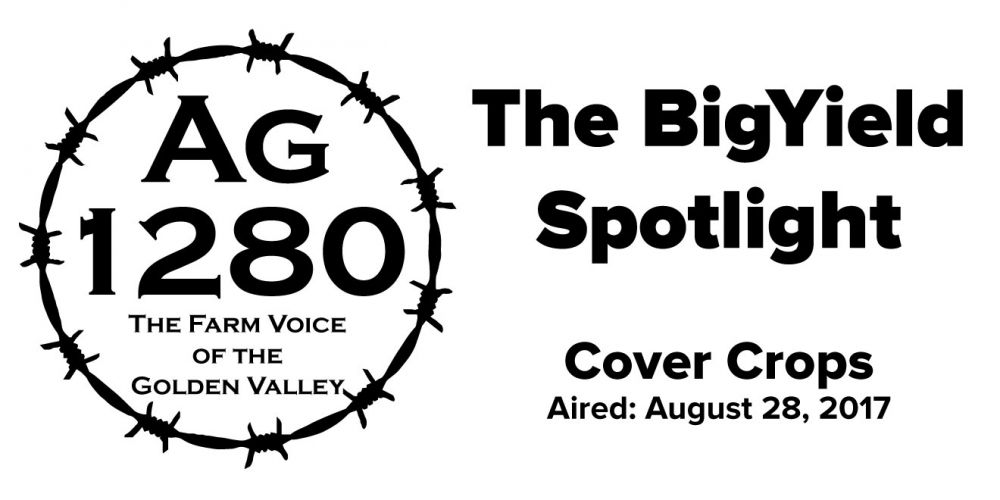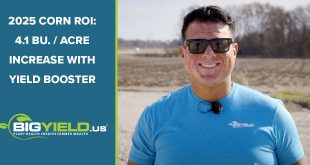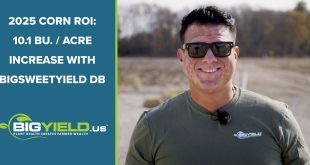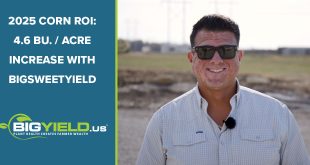
Landon Teal discusses cover crops and the benefits they can bring to growers.
Listen to the BigYield.us team and Kyle Hill, Ag 1280 Farm Director, each Monday, Wednesday, and Friday on Ag 1280 KDKD-AM. The segments air at 7:15 am and again at 12:15 pm.
This segment originally aired on August 28, 2017.
Audio Transcript
Kyle: Time once again for a BigYield Spotlight. I’m Kyle Hill, visiting with Landon Teal of BigYield.us. Good to have you here today.
Landon: Thank you Kyle.
Kyle: For the last several years, I’ve been hearing about cover crops and been talking about them a bit. This is a big topic for a lot of growers. Why is that?
Landon: Cover crops can be a huge asset to a lot of growers. There are lots of different benefits to using them, like promoting good soil health, increasing organic matter, and also reducing erosion. Ultimately, there is not a one “fix-all” for every person out there. It comes in very different ways and each farm is different and needs to be managed differently. Determining what you want to achieve with your field and with your cover crop is what you base your decision on for what type cover crop to use.
Kyle: When looking at cover crops, what are some factors you need to consider?
Landon: It’s kind of like I said earlier, each farm needs to be managed differently. In general, you need to see if you want a single cover crop or a multi-species cover crop. There are lots of different benefits to both. I see more more people using multi-species cover crops because of the benefits. With the multi-species cover crop, you have a mix of grasses and legumes working together to promote good soil health. A lot of your federal agencies like to see the multi-species due to the promotion of soil health. Basically, there are lots of plants out there that work in many different ways. Some help with erosion, some can break down compaction layers, and some really help to preserve nutrients for the next growing season.
Kyle: What are some ways that farmers can plant cover crops?
Landon: If you are looking at soil health, you want to keep something growing in your field every day of the year. Whether it’s in the winter, in the summer, in the spring, you want to have that field looking green, kind of like a lawn. As soon as you harvest, you should start planting something else. Some guys have the ability to aerial seed cover crops – you can fly a plane over and drop the seed in. Some people have ground rigs that are able to get through the field without destroying the cash crop. More than likely, guys will harvest and plant right after.
Kyle: Now besides soil health, erosion, and organic matter, I’m sure there has to be some cash benefits to cover crops.
Landon: Yes, actually there is. Again, depending on what you are trying to achieve, you can plant a cover crop for monetary value. Some examples are cover crops like wheat and oats. A lot of guys plant wheat for erosion issues, but you can use that as a burn down and kill the crop, but a lot of guys like to harvest it so they have that seed they can use to get cash in return. This last year at the research farm we also planted oats. We planted that with a mix and they did a good job. We harvested the oats, and the stuff we had growing beneath the oats died out and we were able to harvest without any problems. Those are just two common examples of cover crops that guys use around the area. If you want more information, there are several ways to get economic value from your cover crops.
Kyle: If anyone has questions about cover crops, or any of the products and services available through BigYield, how can they get ahold of you Landon?
Landon: They can contact us online at www.BigYield.us, or give us a call at 816-773-6096, or stop by the research farm there in Garden City.
Kyle: Landon Teal with BigYield.us, visiting with us once again in studio. Thanks for your perspective, glad to have you here.
Landon: Thank you Kyle.
 BigYield High Yield Soybeans, High Yield Corn, and High Yield Wheat
BigYield High Yield Soybeans, High Yield Corn, and High Yield Wheat



